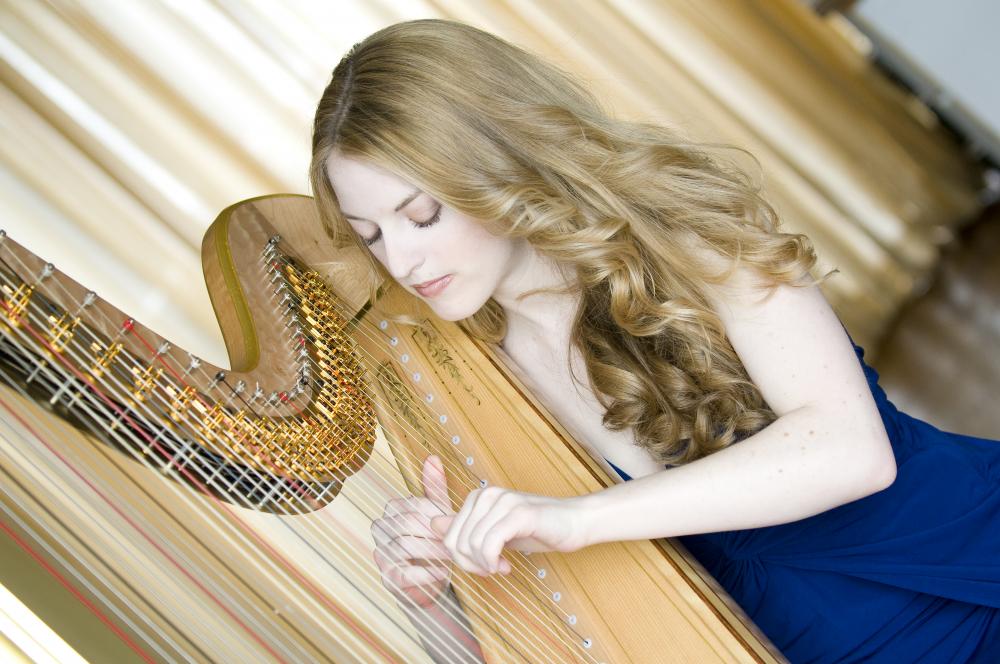HarpFusion is taking the desert to Iceland. Just a few degrees south of the Arctic Circle.
The six-person ensemble from the Fred Fox School of Music, in collaboration with faculty and students from the School of Dance and Art, will perform “Mirage,” on March 14 at the Harpa Concert Hall in Reykjavik, Iceland.
“Mirage” is a three-part multimedia performance that explores themes of psychological dissonance, climate change, and the many colors of the human experience. The title suggests a connection between a natural phenomenon of desert landscapes and the varying perceptions of reality that a victim can experience in trauma.
The music for “Mirage” was arranged and performed by HarpFusion.
(The ensemble will also give a separate performance on March 12 also at the aptly named venue, Harpa. Bach to the Future features all-new arrangements by the ensemble of music ranging from J.S. Bach to John Williams.)

HarpFusion
Hunter Ackerley
Sarah Carruth
Yvonne Cox
Victoria Gonzalez
Dr. Michelle Gott, Director
Xiaodi Xu
Collaborators
Autumn Eckman, School of Dance (choreographer, performer)
Lorin Mathis, School of Dance (performer)
Jonathan Marquis, School of Art (videographer for ‘Drift’)
Dorsey Kaufmann, School of Art (videographer for ‘Mirage’)
The Three Parts
- The program opens will “When I am Among the Trees,” a duet for harp and dance, featuring music by Japanese composer Takashi Yoshimatsu, choreography by Autumn Eckman and artwork by Julia S. Powell, which are visual representations is based on a poem by Mary Oliver, which is the title of the piece.
- “Drift,” a work exploring climate change through glacial deterioration, which premiered in February 2019 as part of “Dances from the Heart” at the Stevie Eller Dance Theatre, featuring video projections by Jonathan Marquis, choreography by Autumn Eckman.
- “Mirage” is an integrated, multimedia performance exploring psychological dissonance as a result of abusive relationships. Music of Dmitri Shostakovich, Nine Inch Nails, and Ludovico Einaudi is paired with film by Dorsey Kaufmann and choreography by Autumn Eckman to portray the darkness of abusive situations and the internal conflict of someone struggling to find the light.

Q&A WITH DR. MICHELLE GOTT
Why Iceland? What will the students gain from this trip?
Touring has been one of the hallmarks of HarpFusion since its founding in 1978. When deciding where to go for our first tour under my direction, I followed my intuition. To me, Reykjavik is a surprising sister city of Tucson, but in the opposite climate extreme. It’s a smaller city with a remarkably creative and resourceful culture where independent artistry thrives. Their main performing arts center, called Harpa, is architecturally stunning, well-located in downtown Reykjavik, and perfect for the interdisciplinary work we are doing as an ensemble. I also think that the metaphorical concept of fire and ice applies perfectly, both to the contrasting climates and to the emotional spectrum of our projects.
What do you love about these students?
In my students, I see incredible leadership, creativity, compassion, intelligence, dedication, humor, and resilience. It is an absolute joy to spend time with them in rehearsal and in social settings. I also trust them to the highest degree – an essential element of touring anywhere!
What’s the meaning of the title, “Mirage?”
The title, “Mirage,” draws an analogy between visual distortions commonly experienced in the desert with psychological dissonance experienced in abusive relationships. Like a mirage, the distortions of self and of one’s reality that are common to victims of abuse are just that – a mirage. In our project, the audience is brought directly into this distorted, dissonant world to feel the intensity of the lead character’s life.
What does a collaboration of art disciplines give to a project / to an audience?
Our collaboration between music, dance, and film is intended to bring the audience directly into the experience. The theatre in Harpa is black-box style, with stadium seating and lighting effects on the surrounding walls. By using this theatre space thoroughly, we hope to fully immerse everyone in the performance, to provoke thought, and to encourage reflection and empathy.
What does ‘the arts’ bring to bear when exploring sometimes darker themes?
Personally, I come from a multidisciplinary background that includes training in dance, theatre, singing, and of course playing the harp. I find myself continually reaching for deeper integration of these expressive elements, because I’m attracted to the potential that artistic fusions have to elevate each individual component. The most successful fusions, in my opinion, are the projects wherein each individual element becomes stronger because of the collaboration. In our project, “Mirage,” we have treated each component – music, dance, and film – as equal and necessary for the communication of our ideas. My hope is that people will truly feel the intensity and emotions of this project. People may respond more aural, visual, or physical material, or simply to the fusion itself.
Finally, can you sum up the mission of the trip the performance in one sentence?
To build new pathways of empathy, compassion, and knowledge through a transformative fusion of music, dance, and film.
